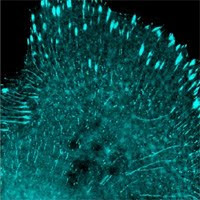The success of inducing pluripotency in primary fibroblasts and other cells with a combination of only a small number of transcription factors suggested that fully differentiated cells might change fate following similar treatments. Since the demonstration of induced pluripotent stem cells (iPSCs), at least three examples have been published where 3 cell type-specific factors were selected from a pool of 10-20 candidates that, when expressed from viral vectors, could induce beta-cells, neurons, or cardiomyocytes.
Induced beta-cells [1]: Ngn3, Pdx1, and Mafa, adenovirus injected to in vivo targets
Induced neurons (iN) [2]: Ascl1, Brn2, and Myt1l, lentivirus infecting mouse embryonic fibroblasts (MEF) or tail tip fibroblasts (TTF)
Induced cardiomyocytes (iCM) [3]: Gata4, Mef2c, and Tbx5, lentivirus infecting cardiac fibroblasts or TTF
In all 3 cases, the change of fate seemed to be via direct conversion, without passing through a progenitor cell fate before further differentiation. Like iPSC reprogramming, direct reprogramming also requires a transient supply of inducing factors. Unlike generating iPSCs, the percentage of cells getting reprogrammed is much higher in direct reprogramming, ~20% in the cases of iN and iCM vs 0.1-1% in iPSC. It is likely that a transient, inductive expression of essential factors jump-starts endogenous factors to establish cell fate specific programs; it has also been illustrated that chromatin remodeling through DNA methylation, histone modifications, etc. accompanies the direct reprogramming events.
Read the complete story and this week's official post and new product of the week, weekly promotion, etc, go here.
Sunday, August 22, 2010
From iPSC to induced beta-cells, iN and iCM: dedifferentiation vs direct reprogramming
Subscribe to:
Post Comments (Atom)




No comments:
Post a Comment